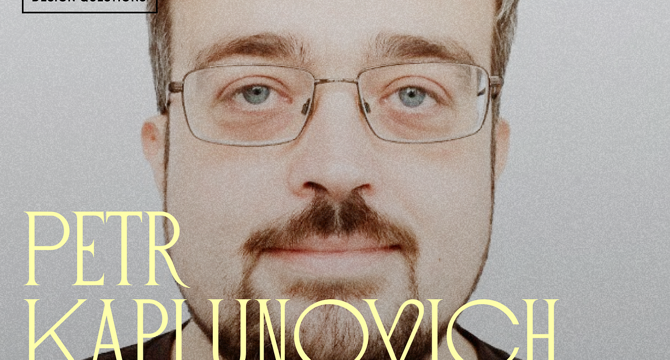Product Management News
Medium
179

Image Credit: Medium
What Makes a Chatbot Good? Let’s Ask the Users — A Product Deep Dive
- The article focuses on analyzing a Kaggle dataset of chatbot quality ratings, with User Satisfaction as the primary metric.
- Key metrics like Quality Rating, providers, and models are assessed to determine the factors influencing user satisfaction.
- Identification of top models and providers, consideration of performance levers like training dataset size, speed, and price rating.
- A heatmap analysis revealed Benchmark performance as the most reliable driver of User Satisfaction in the dataset.
- Six best-fit models are highlighted, emphasizing the importance of quality over speed in user satisfaction.
- Hypotheses and A/B testing setups are proposed to optimize chatbot performance and user experience.
- Strategies include highlighting domain expertise, offering flexible pricing based on usage tiers, and allowing users to set performance preferences.
- The features aim to provide more personalized and adaptive user experiences based on data insights.
- The article concludes with a reflection on the analysis process and the insights gained about chatbot ratings.
- Overall, the deep dive into chatbot quality ratings offers valuable insights for improving user satisfaction through data-driven strategies.
Read Full Article
10 Likes
Medium
264

Image Credit: Medium
Leading the Shift from Project to Product
- The shift from project to product is a structural change that involves funding, team design, measurement, incentives, and culture.
- Product leaders play a crucial role in shaping this shift effectively.
- The article targets Heads of Product, Tribe Leads, Group Product Managers, and senior product professionals.
- Real empowerment of product teams involves enabling them to own outcomes and make decisions.
- Empowerment is achieved through challenging conversations that shift control towards product teams.
- Teams need domain-level clarity to move beyond delivery coordination towards strategic thinking.
- Great product teams prioritize based on evidence rather than assumptions.
- Leaders need to provide coherent and visible strategies to their teams.
- Internal product work, though less glamorous, is essential for faster and safer operations.
- Leading internal products should be approached with the same seriousness as customer-facing products.
Read Full Article
15 Likes
Medium
135

Image Credit: Medium
User Personas are Dead: AI-Powered User Models for 2025 and Beyond
- Traditional static personas are becoming outdated due to AI's ability to capture real user behavior.
- AI-powered dynamic user models are being advocated to better reflect how real people behave.
- Alan Cooper's introduction of personas in the 90s provided teams with a shared language to understand users, but they are no longer sufficient.
- Static personas simplify users' complexity by trying to summarize them with a few traits, potentially reinforcing bias and missing edge cases.
- AI-driven models can track the evolving and inconsistent nature of real users, offering hyper-personalized experiences.
- By focusing on user behavior and using tools that craft dynamic user models in real-time, companies can adapt better to users' changing needs.
- Tools for tracking behavior and understanding user intent are crucial for creating effective user models.
- In 2025, products will be judged not just on features but on how fast they can learn and adapt to users' shifting moods.
- Human qualitative research remains essential for gaining insights and context that AI-powered tools may miss.
- Retiring static personas is about embracing dynamic user understanding through AI and qualitative research efforts.
Read Full Article
8 Likes
Medium
426

Why Choosing the Right Haircare Products Matters
- Choosing the right haircare products is crucial for maintaining strong, healthy hair that can resist damage and grow well.
- Using generic products without considering your unique hair type can be a common mistake.
- Understanding your hair type helps in selecting the most suitable products for effective results.
- Daily stressors like brushing, heat styling, and pollution can weaken hair, making it prone to breakage and dullness.
- Quality haircare products act as a protective shield, strengthening and nourishing hair from root to tip.
- Scalp health is crucial for strong hair growth, so choosing the right shampoo with appropriate ingredients is essential.
- Key ingredients in haircare products play a significant role in promoting hair health.
- Reading product labels helps in avoiding harmful ingredients and choosing products that benefit your hair.
- Consistently using the right products is more important than having a complex hair routine.
- A simple yet effective haircare routine involves shampooing, conditioning, and occasional treatments tailored to your hair's needs.
- Using products that work for your hair type enhances its health and boosts confidence.
- Shopping wisely for haircare products involves understanding your hair's unique needs and choosing products that cater to them.
- Tailoring your haircare routine to your hair type is essential for maintaining healthy, beautiful hair in the long run.
- Investing in the right products not only cares for your hair but also enhances your confidence every day.
- Prioritize your hair's needs over trends or influencer recommendations when selecting haircare products.
Read Full Article
25 Likes
Discover more
- Programming News
- Software News
- Web Design
- Devops News
- Open Source News
- Databases
- Cloud News
- Operating Systems News
- Agile Methodology News
- Computer Engineering
- Startup News
- Cryptocurrency News
- Technology News
- Blockchain News
- Data Science News
- AR News
- Apple News
- Cyber Security News
- Leadership News
- Gaming News
- Automobiles News
Medium
233

Image Credit: Medium
Answering the Big “Why” Behind a Small Water Bottle
- Preparing for a family trip, the idea of carrying reusable water bottles to avoid buying plastic ones at the airport arose.
- Upon suggesting the reusable water bottles, the author's daughter, Sita, raised an important question.
- The author found themselves reflecting on the question posed by Sita, realizing the significance of her query.
- The author explained the potential risks of carrying unidentified liquids that resemble harmless beverages at airports.
- Years ago, individuals attempted to bring dangerous liquids that mimicked water or juice onto airplanes.
- To counter this threat, airports implemented regulations to differentiate between safe and harmful liquids.
Read Full Article
14 Likes
Medium
58

Image Credit: Medium
Jira Didn’t See That Coming
- The article highlights the often invisible work of a project manager (PM) in managing stakeholders and navigating challenges in a team.
- PMs are described as part therapist, translator, and political diplomat, responsible for managing egos, agendas, and priorities.
- Effective PMs are portrayed as persuasive and skilled at influencing discussions and decisions without being loud.
- Real alignment work involves daily interactions and reminders of the project's goals and challenges in various team settings.
- PMs are tasked with being the keeper of the project's purpose while ensuring consistency in the team's efforts.
- Managing priorities is crucial, where saying 'yes' to one feature often means saying 'no' to another.
- Great PMs approach saying 'no' by suggesting alternatives, phasing in features, or validating needs before committing resources.
- The job of a PM is not about winning but about aligning expectations and ensuring all team members feel like they've achieved something.
- The article concludes by appreciating the unseen work of PMs who navigate challenges, clear obstacles, and ensure team success.
Read Full Article
3 Likes
Medium
175

Image Credit: Medium
How to turn real conversations into well-prescribed stories
- When starting with real conversations instead of assumptions, user stories become more precise and impactful.
- Asking the right questions and listening to users' real needs is crucial in crafting user stories that truly address problems.
- Users may unintentionally lie if bad questions are asked, leading to ineffective user story creation.
- The essence of a good user story lies in addressing real symptoms, not just a well-crafted narrative.
- Quality user stories stem from genuine conversations with users, reflecting their actual pain points.
- Breaking down user stories should focus on delivering observable value to the user, not just dividing tasks.
- Validating user stories involves ensuring they solve user needs, offer observable results, and can stand alone for testing.
- Apothecary's formula for user stories: TINCTURE - a methodical approach to distilling stories from the core problem.
- Crafting user stories akin to creating healing tinctures: with intention, observation, and understanding of user needs.
- User stories should capture real user feedback and experiences, not just internal assumptions, to diagnose and address underlying issues.
Read Full Article
10 Likes
Medium
404

Title: Apsenn Industries: Pakistan’s Leading Custom Clothing Manufacturer for Global Brands
- Apsenn Industries is a custom clothing manufacturer located in Sialkot, Pakistan.
- The company produces a variety of clothing ranging from sportswear to leather fashion jackets.
- They cater to brands across the USA, Europe, Canada, and Australia with a production capacity of 500,000 units in 45 days.
- Apsenn offers custom sportswear, streetwear, workwear & uniforms, fitness clothing, and leather clothing.
- Key reasons to choose Apsenn include low minimum order quantity, quality control, private labeling, fast delivery, and responsive support.
- The company is certified by various organizations, has ISO compliance, and operates from 4 production units in Sialkot.
- For samples or bulk orders, interested parties can contact Apsenn via their website, email, or WhatsApp.
- Apsenn Industries serves clients globally in the fashion industry.
- They aim to be a reliable partner for those in need of high-quality custom clothing.
- Apsenn is focused on helping brands establish themselves in different markets.
- Their services cater to various clothing needs, from sports teams to fashion brands.
- The company emphasizes quality control and quick turnaround times for their products.
- Apsenn prides itself on its responsive customer support via WhatsApp and email.
- The company's association with multiple industry bodies highlights its commitment to quality and standards.
- Apsenn Industries invites businesses to collaborate with them for their clothing manufacturing needs.
Read Full Article
24 Likes
UX Design
305

Image Credit: UX Design
AI-first?
- Tech buzzwords like AI First are gaining popularity in the tech world.
- AI First implies prioritizing AI for tasks over manual employee efforts.
- Despite concerns over AI causing job losses, adaptation to new roles is expected.
- AI excels in efficiency, pattern recognition, and automation but struggles in creativity and problem-solving.
- AI's limitations include predicting the future, understanding context, and applying creativity.
- While AI is valuable for automation and research, it falls short in complex problem-solving scenarios.
- The challenges of AI include biases, lack of reasoning skills, and reliance on human intervention for refinement.
- AI should be viewed as a tool for augmentation rather than a replacement for human skills and intuition.
- The future of AI lies in leveraging its strengths to enhance human capabilities and address weaknesses.
- While AI may transform certain job functions, human prompting and refinement will still play essential roles.
Read Full Article
18 Likes
UX Design
224

Image Credit: UX Design
Interview with Petr Kaplunovich, Director of Design at Stackpoint, ex-Google, MIT
- Petr Kaplunovich, Director of Design at Stackpoint and ex-Google, shared his journey from studying physics to getting involved in design through events and projects.
- His experience includes working with Paul English at Kayak and Brian Kalma at Zappos, shaping his approach to product design.
- Challenges at work include accessing B2B users, balancing buyer-user dynamics, and learning curve in different industries within real estate or fintech.
- Petr leverages AI for research and prototyping but finds it inefficient in tasks requiring originality like naming and branding.
- Design inspiration sources for Petr include Mobbin, Twitter for experimental ideas, and Pinterest for visual inspiration.
- Key influences from his cultural background include instilled ambition, interest in human psychology, critical thinking, and balancing Russian pessimism with optimism in the U.S.
- Petr reflects on early career mistakes of not taking enough ownership and focusing more on personal growth over supporting teammates.
- Traits of effective leaders according to Petr include optimism, empathy, and strong emotional intelligence.
- Important qualities in designers include comfort with uncertainty, empathy, and taste developed over time through observation and practice.
- Skills crucial for product design not commonly taught in school include agency in uncertain situations, building taste, empathy, and psychology.
- Common issues in designer portfolios according to Petr are highlighting only successes and including unreadable diagrams, stressing the importance of honesty, reflections on failures, and clear presentation of work.
Read Full Article
13 Likes
Medium
444

Image Credit: Medium
Navigating the Israeli Innovation Paradox
- The author shares his journey of exploring Israeli innovation through partnerships with Dr. Hideo Itokawa.
- Creative Organized Technology connects specialists from various fields to collaboratively generate value.
- The author founded an IT company in Nagoya and later brought advanced Israeli technologies to Japan.
- He delves into risk management in high-risk regions like Israel and the importance of duty of care for employees.
- The article discusses travel risk ratings for Israel and the dilemmas faced by companies in conflict zones.
- The impact of social media on business during conflicts like the Gaza War is highlighted.
- The threat of an 'Israel boycott' by the BDS movement poses risks for companies operating globally.
- Strategies to navigate BDS risks and incorporate Israeli technologies into value creation systems are explored.
- The article raises awareness about balancing ties with Israel and mitigating risks in the face of boycott movements.
- Readers are encouraged to learn from the author's experiences and insights for business dealings with Israel.
Read Full Article
26 Likes
Medium
31
Image Credit: Medium
Building a 10x Solution
- Entrepreneurs are assisting prospective restaurant owners in opening new restaurants by focusing on brand promotion, fielding inquiries, and guiding through the complexities of opening in the right location.
- Emphasis is put on reviewing location candidates and seeking new opportunities daily due to the crucial role of location for offline restaurants.
- Significant time is spent on data platforms and visiting potential sites to carry out these tasks, prompting the need for a more efficient solution.
- The challenge lies in creating a 10x solution to streamline the restaurant opening process.
- The process of problem-solving often involves breaking down challenges into smaller, manageable steps to progress effectively.
- The journey towards a 10x solution involves embracing a lean approach, aiming to iterate quickly on failures, capitalize on opportunities, and grow systematically.
- The focus is on repetitive experimentation and continuous learning to overcome challenges and achieve the desired results.
Read Full Article
1 Like
Medium
44

Image Credit: Medium
Build, Buy, or Fine-tune? Making the Right AI Call as a Product Manager
- Using third-party, closed-source AI models through APIs offers speed and convenience, but can become expensive with potential limitations in customization and vendor lock-in.
- Fine-tuning an open-source model provides more control and customization, especially beneficial for niche fields, improved data privacy, and potential cost-effectiveness in the long run for specific tasks.
- Building a foundational model from scratch is a significant investment requiring vast resources, suitable mainly for very few companies with the capability and resources to do so.
- Product managers play a crucial role in deciding whether to Build, Buy, or Fine-tune AI models based on factors like cost, control, customization, and business goals.
- The decision on AI strategy should align with the product's objectives and user needs, guided by understanding the advantages and disadvantages of each approach.
Read Full Article
2 Likes
Medium
292

Image Credit: Medium
My First AI Agent: A Podcast Summarizer That Saves Me Hours
- The individual was falling behind on product management podcasts hosted by Lenny and desired a solution to keep up without spending excessive time listening to each episode.
- The solution implemented was an AI agent functioning as a personal assistant to listen to the podcasts and offer summaries.
- Key functions of the AI agent include scanning podcast RSS feeds for new episodes, extracting audio for transcription, summarizing content using GPT-4, and storing the summaries in the user's Notion workspace.
- The technology stack used involves Zapier for workflow automation, AssemblyAI for audio transcription, GPT-4 for content summarization, and Notion for organization.
- This AI agent has saved the user a significant amount of time, approximately 3-5 hours per week, without any need for coding.
- The creator anticipates a future where personal AI agents will manage tasks such as research, planning, and communication on behalf of individuals.
- The individual expresses enjoyment in building the AI agent and invites others to share their experiences and ideas on experimenting with AI agents.
Read Full Article
17 Likes
Medium
112

Image Credit: Medium
Strategic Growth Secrets: How to Keep Your Business Agile and Aligned with Market Demands
- A retail company partnered with Full Sail PMC to create an agile growth strategy to adapt to market changes.
- They used cutting-edge software solutions and real-time data to monitor market trends and streamline operations.
- A technology startup worked with Full Sail PMC to optimize internal processes and improve collaboration.
- By aligning product development with market needs, the startup achieved quicker product launches and higher customer satisfaction.
- Continuous alignment with market demands is crucial for business agility and success.
- Collaborating with experts like Full Sail PMC can provide tools and guidance for staying flexible and in tune with market trends.
Read Full Article
6 Likes
For uninterrupted reading, download the app